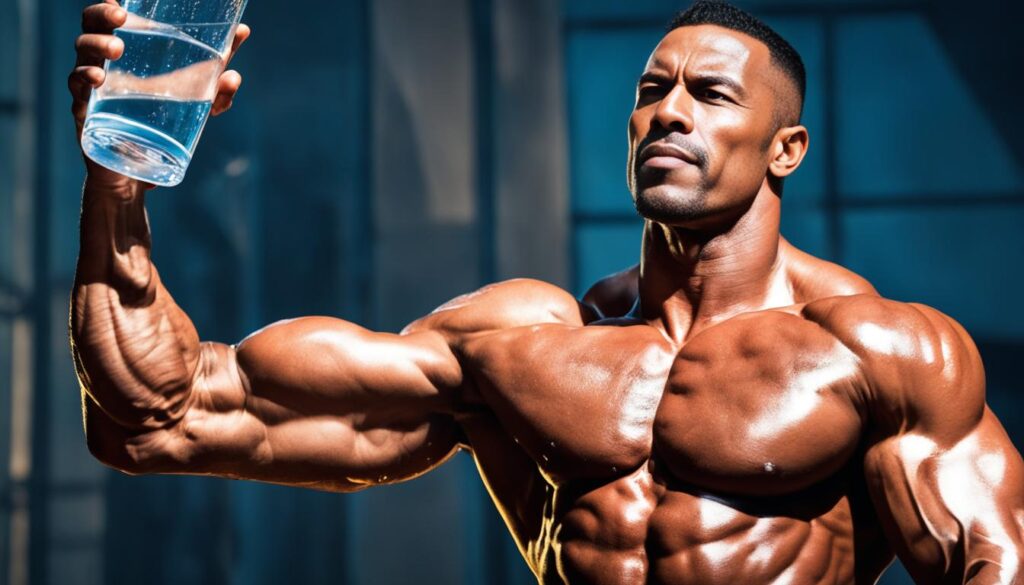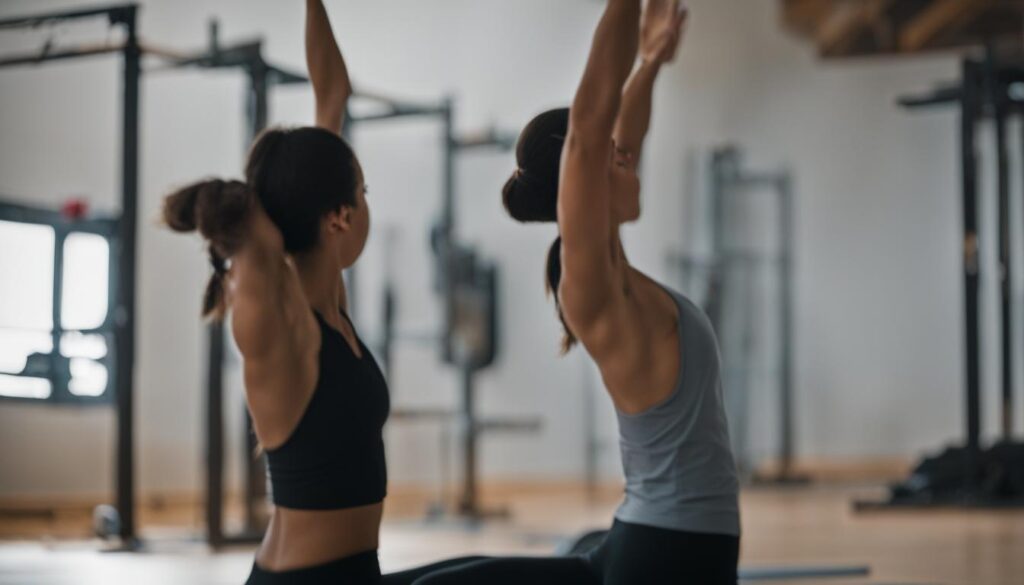Rib cramps, often termed as “charley horses,” present as involuntary muscle contractions that can occur anywhere in the body, but most frequently affect areas like the calves, thighs, foot arches, hands, arms, abdomen, and of course, the rib cage. Carolyn Quist, DO, an osteopathic physician, points out that these cramps may feel unusually firm to the touch and may even display visible twitching.
While anyone could experience these cramps, certain groups, including infants, the elderly, overweight individuals, and athletes, face a higher risk. The key to rib cramp prevention lies in regular stretching, ensuring adequate hydration, and maintaining a healthy electrolyte balance. If a cramp does occur, immediate steps such as discontinuing the activity, gently stretching and massaging the area, managing pain with heat or cold, and rehydrating can help reduce discomfort and ward off future incidents.
Key Takeaways
- Rib cramps, also known as “charley horses,” are painful, involuntary muscle contractions.
- These cramps commonly affect several parts of the body, including the thighs, calves, hands, abdomen, and rib cage.
- Particular groups, such as infants, elderly people, overweight individuals, and athletes, are more susceptible to muscle cramps.
- Regular stretching, adequate hydration, and maintaining a balanced intake of electrolytes are critical for rib cramp prevention.
- If a cramp happens, immediate relief techniques include discontinuing the triggering activity, massaging and stretching the affected muscle, proper hydration, and applying heat or cold to the area.
Understanding Rib Cramps: Causes and Effects
For many people, rib cramps are a familiar and discomforting experience. These painful cramps are more than mere discomfort – they’re an uninvited interruption to daily activities. Brought about by involuntary contractions and the inability of muscles to relax, rib cramps often occur in the rib cage area, causing significant discomfort. A better understanding of rib cramps and their triggers can help in formulating efficient rib cramp prevention techniques and exercises.

Proper hydration is a pivotal factor in maintaining the overall health of muscles and contributes significantly to rib cramp prevention. Staying well-hydrated enables muscles to contract and relax efficiently, while also preventing the muscle cells from becoming irritable and potentially leading to cramps.
Consistent hydration is paramount in both the prevention and relief of rib cramps. It supports the normal function of muscles and is especially effective when integrated with other preventive techniques such as regular stretching and maintaining electrolyte balance. – Dr. Quist
Because muscles are about 75% water, even minor levels of dehydration can have a significant impact on their function and exacerbate issues such as rib cramps.
- Drinking plenty of fluids: It is advised to maintain regular fluid intake throughout the day, not just during exercise.
- Avoid alcohol before exercise: Alcohol is a diuretic, which means it increases urine production and can lead to dehydration.
- Drinking during and after exercise: During prolonged physical activity, it’s crucial to replace lost fluids to maintain hydration and avoid rib cramps.
By prioritizing hydration, we can more effectively manage and prevent rib cramps, thereby improving our overall muscle health and physical performance.
Proactive Stretching and Warm-Up Techniques for Prevention
Fighting off rib cramps isn’t solely a matter of reaction; a proactive approach can prove immensely beneficial. A primary element of this proactive stance involves stretching and warming up the muscles before engaging in physical activity. These efforts often encompass a variety of exercises, each carefully designed to prepare your muscles for what’s to come, and reduce the likelihood of experiencing a rib cramp.
Effective Stretching Before Exercise
Devoting time to mindful, thorough stretching before physical activity equips the muscles for the exertion ahead, thereby reducing the risk of rib cramps. Whether you’re about to embark on a challenging workout or a less intense physical task, setting aside even a few minutes for stretching can make a significant difference in how your muscles perform and respond.
Stretching exercises aid in enhancing muscle flexibility, increasing range of motion and significantly reducing the risk of experiencing muscle cramps, including those that affect the rib cage. Movements such as side stretch, torso twist, and rib cage stretch are particularly effective in this regard, specifically targeting the muscles around the rib cage and conditioning them for physical activity.
Warm-Up Routines to Reduce Cramp Risk
In addition to stretching, incorporating a warm-up routine can provide an extra layer of rib cramp prevention by preparing the respiratory muscles, including the diaphragm, for the increased demands they’ll face during physical activity.
Warm-up routines often consist of exercises like jogging on the spot or doing jumping jacks for a few minutes, anything to get your heart rate up. Integrating diaphragm exercises and movements that focus on core strengthening into your warm-up can enhance muscle resilience and endurance. This enables your body to adjust better to variations in workout intensity, contributing to the prevention of rib cramps.
Understanding how to prevent rib cramps and implementing these rib cramp prevention exercises can lead to more comfortable, productive workouts and a significantly reduced risk of experiencing this uncomfortable condition. Remember, prevention is far better than cure, so take the time to stretch and thoroughly warm up your muscles before you get moving.
Maintaining Electrolyte Balance for Rib Cramp Prevention
Rib cramp prevention heavily relies on an effective balance of electrolytes. Electrolytes such as sodium, potassium, chloride, calcium, and phosphate are crucial in ensuring muscle contraction and relaxation, aiding to deter the occurrence of rib cramps. Dr. Quist emphasizes the importance of these vital nutrients, underscoring that a proper electrolyte balance can significantly improve rib cramp treatment.
“Maintaining a balanced electrolyte presence helps to ensure nutrients crucial for muscle contractions are sufficiently available in the body. This is one of the most efficient rib cramp remedies one can focus on.”
There is a variety of different strategies that can be followed to maintain this balance. Predominant among these includes having a diet rich in fruits, vegetables, and nutrient-dense foods.
- Eat a diet rich in fruits and vegetables
- Include nutrient-dense foods in your diet
- Possibly supplement with electrolytes during prolonged exercise
Supplementing electrolytes may especially benefit those engaging in extended periods of physical activity, particularly in warmer environments where sweat loss can be significant. This practice can potentially enhance the results of rib cramp treatment, making it an effective measure in the quest for rib cramp prevention.
The Role of Diet in Preventing Rib Cramps
When it comes to the prevention of rib cramps, diet plays a significantly pivotal role. A diet structured to support muscle function and cater to the body’s overall well-being is the key. Consuming essential nutrients, including electrolytes, vitamins, and minerals through a balanced diet helps optimize muscle health, ultimately helping you avoid those sudden and painful rib cramps.
Nutrients Essential for Muscle Function
Understanding the function of essential nutrients in reducing rib cramp causes is integral for prevention. Muscles require certain nutrients to function optimally, and deficiencies in these vital substances can lead to muscle issues including cramps. Essential nutrients for muscle health, alongside electrolytes, are vitamins and minerals. Including nutrient-rich foods in your rib cramp prevention diet ensures your muscles have all they need to operate efficiently.
Understanding the Impact of Meal Timing
Besides the type of food consumed, the timing of meals can have a noticeable impact on the occurrence of rib cramps. The consumption of heavy food or drinks right before exercise might severely increase the likelihood of experiencing these cramps. To prevent rib cramps, it’s beneficial to establish a meal schedule that allows sufficient time for digestion and proper nutrient absorption. This will help in providing muscles with the necessary resources to operate effectively without the risk of cramping during physical activities. These essential rib cramp prevention techniques can make a significant difference in how you manage and prevent rib cramps.





